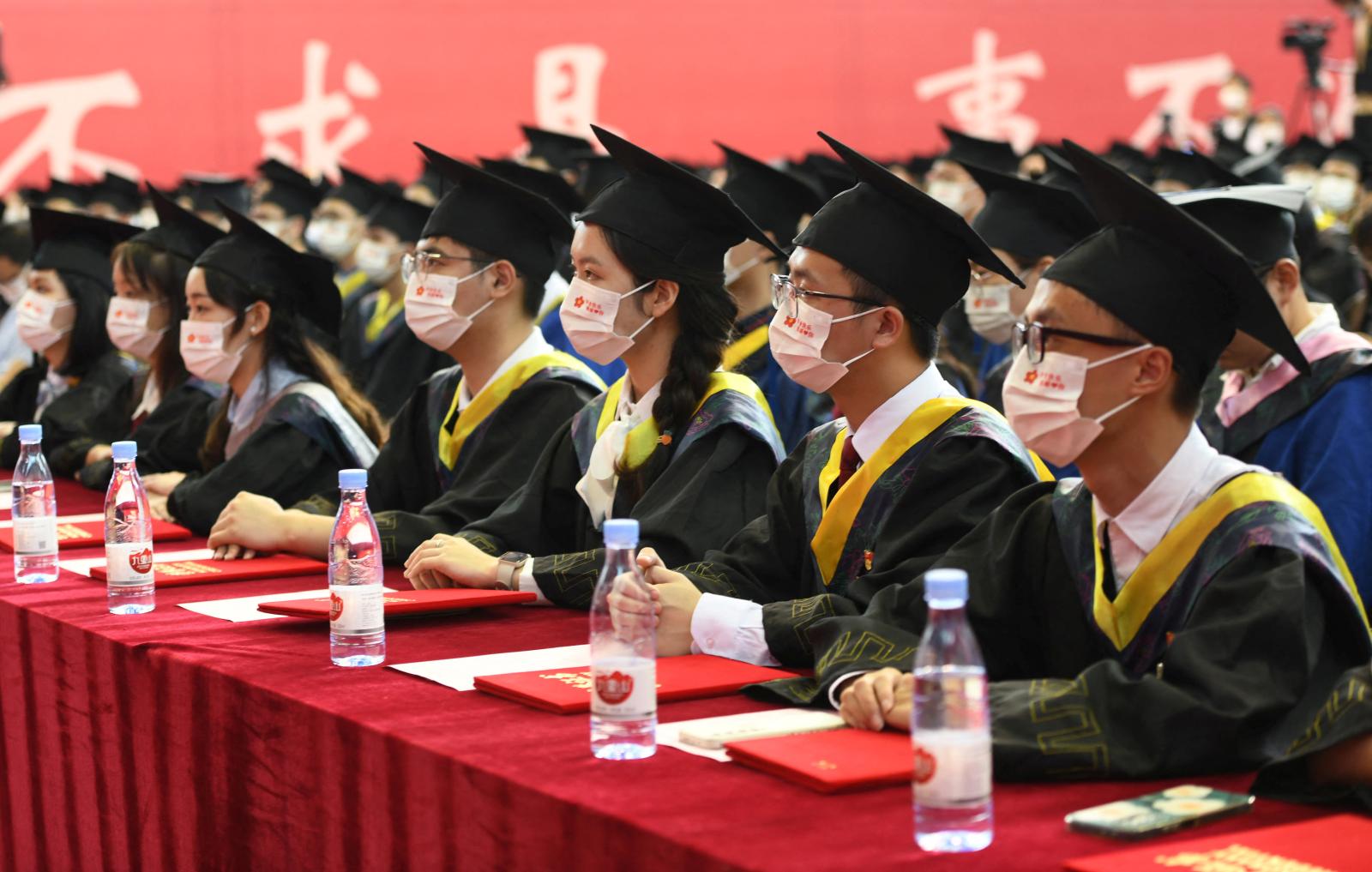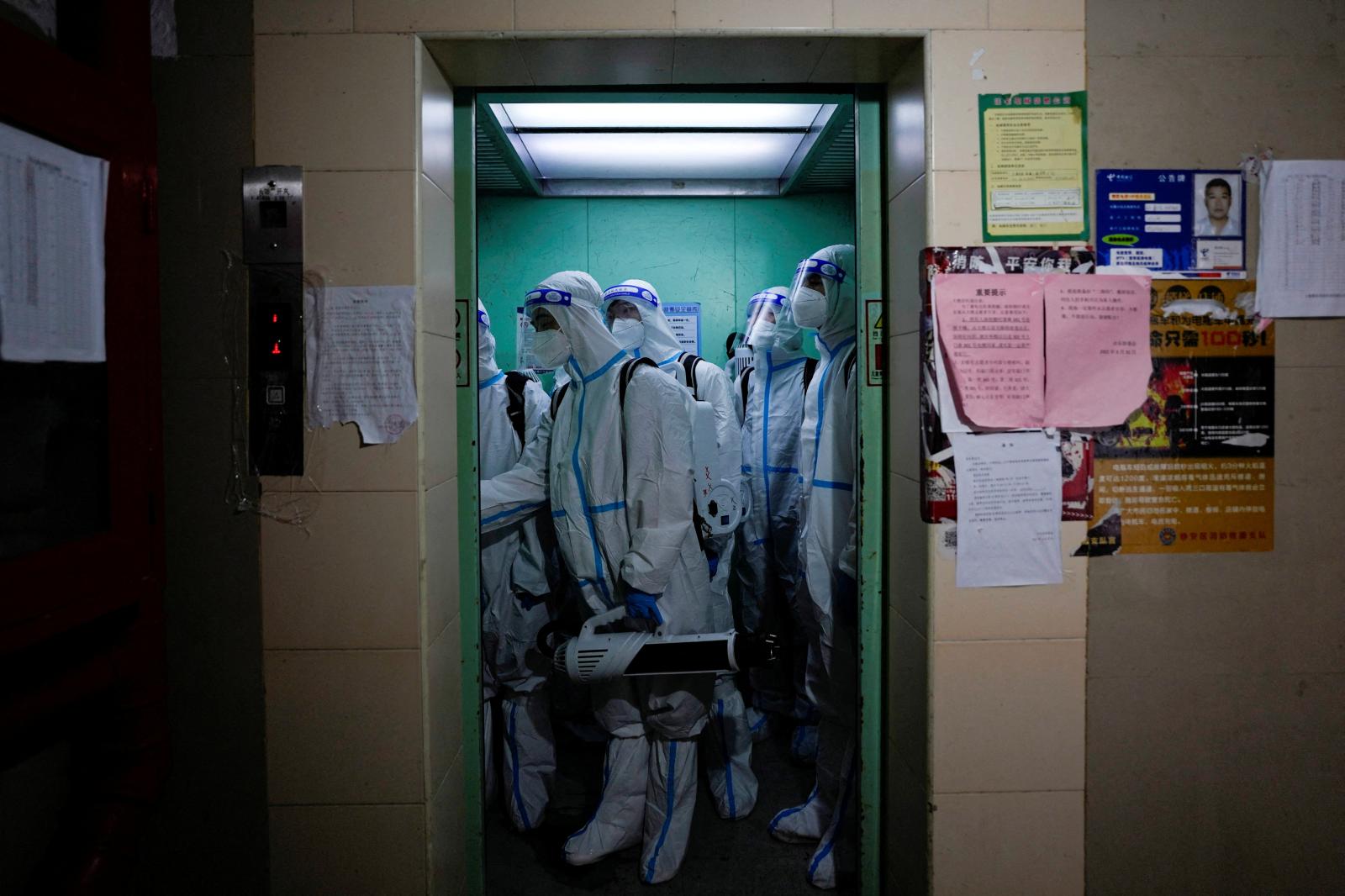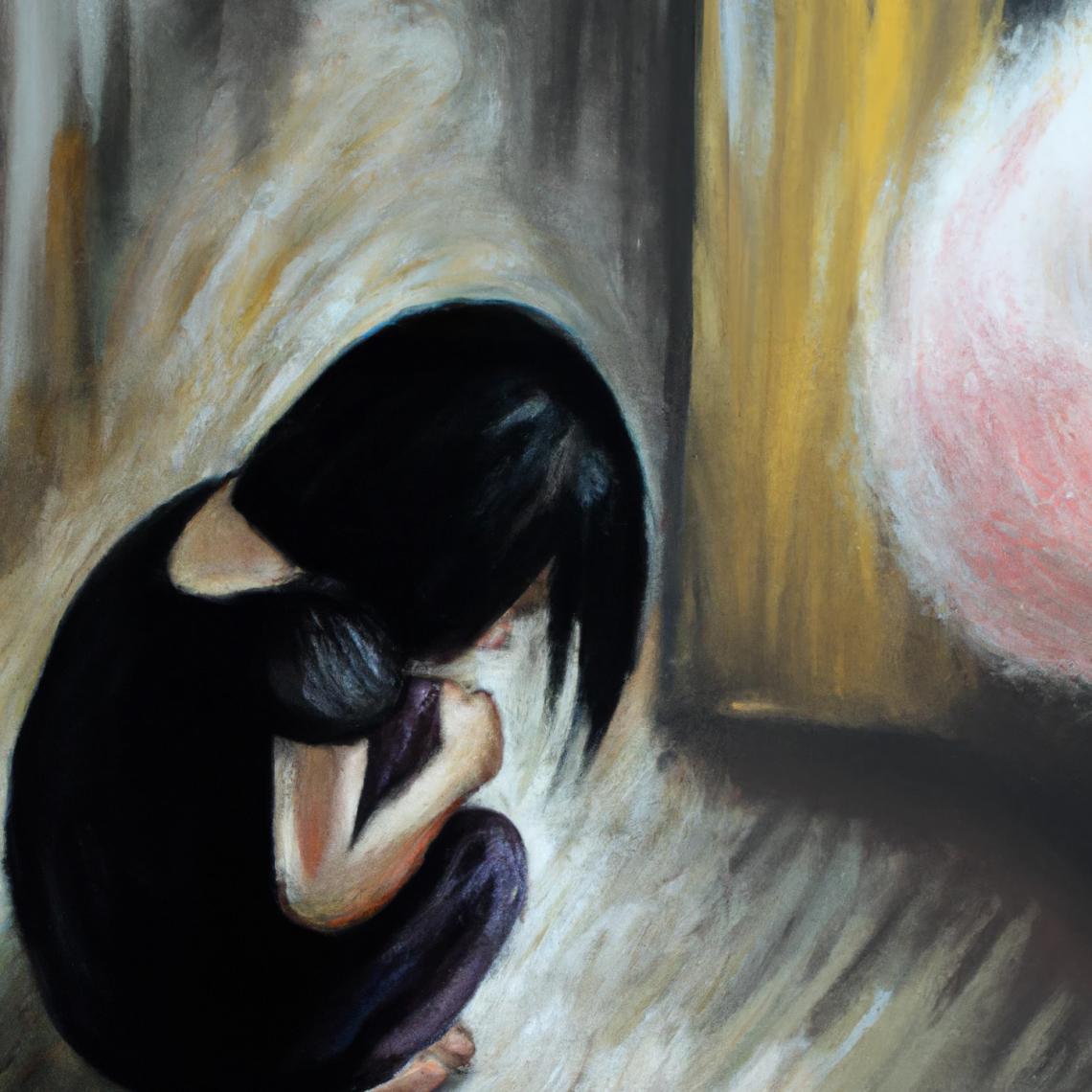
Image generated by DALL-E AI system.
China’s Hollowed-Out Mental Health System
Delving into the psychosocial trauma that has eroded the confidence of Chinese society in the future.
Quick Takes:
- Mental health in China has long been neglected due to state ideology, traditional medical concepts, and stigma of mental illness.
- While progress has been made since 1980, public investment in the mental health system and professional training remain inadequate.
- China's Covid-19 control policies have caused profound psychosocial trauma, including soaring rates of depression and suicide among adolescents, mental stress among healthcare workers, and a widespread sense of learned helplessness.
- The lack of discussion and reflection on the causes of this collective trauma made it difficult to heal, resulting in a loss of confidence in the future.
International China discourse in 2023 has generally been preoccupied with whether its economy can recover now that zero-covid rules have been scrapped, as if three years of highly abnormal social controls have just evaporated without a trace. Yet those three years have had a profound, lingering psychological impact. Whether China can recover its dynamism will hinge on this collective trauma being assuaged.
China’s mental health system, on the other hand, is long neglected. Its collective psychological crisis has only been exacerbated by the pandemic and the swathes of draconian controls that ensued. Public discussion and reflection are off-limits regarding pandemic-era violations of individual rights and the secondary traumas they engendered, so it will be hard for Chinese society to heal from its post-traumatic stress disorder (PTSD). This essay will attempt to engage in such a discussion and explain Chinese people’s mental health.
State Ideology and the (neglected) Mental Health System
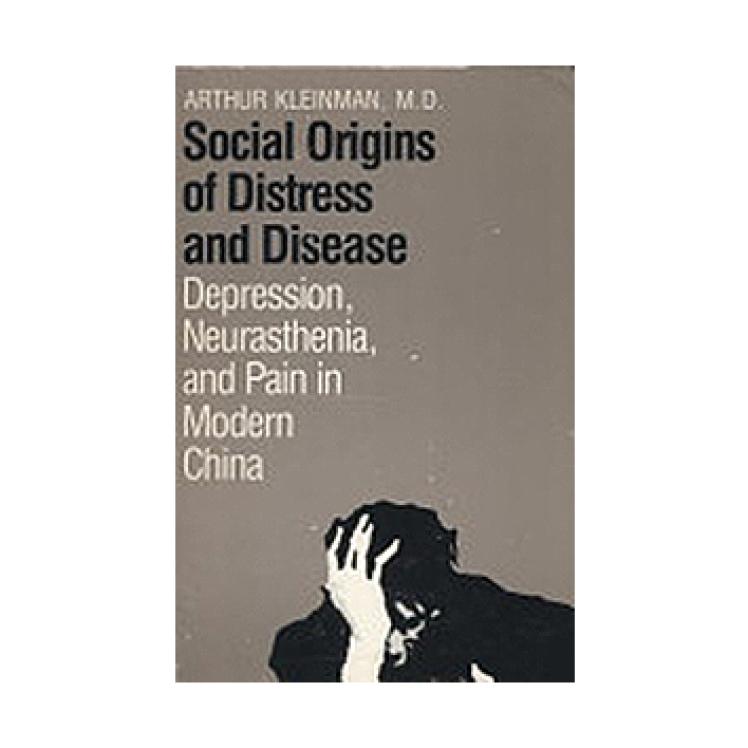
China had few, if any, patients with depression before the 1980s, at least according to statistics; most psychiatric diagnoses were of ‘neurasthenia.’ As the American psychiatrist, Arthur Kleinman found out during field research at the Department of Psychiatry at Hunan Medical College from 1980 to 1983, most of the neurasthenia patients (93 of 100) could be re-diagnosed as cases of depressive disorder. In his view, the persistence of traditional Chinese medical concepts, a focus on somatic rather than psychological symptoms, and the stigmatization of mental illness were key factors influencing diagnoses. Kleinman also discussed connections between mental health and state ideology: for China's state, neurasthenia, conceived essentially as a physical disease, was “a more ideologically acceptable label than depression, a mental disease.”
Research began into the epidemiology of mental disorders in the 1980s. Drafting also started on China’s first Mental Health Law, with assistance from the WHO, but it was 2012 by the time the Law was finally passed. Academics pointed to “the lack of state resources to support such an enormous treatment budget” as the main factor behind the Law’s difficult gestation; China devotes only 1% of total annual health spending to mental health, which is minuscule compared to the 20% share mental disorders account for in the total burden of disease. There were 16756 psychiatrists in the Chinese health system in 2009, equal to 1.26 per 100,000 population. There is a serious lack of state funding for mental health, which leaves countless patients unable to access care. In the case of depression, the National Mental Disorder Epidemiology Survey found that only 3.6% of depressive disorder patients from 2013-2015 had access to specialist psychiatric treatment, and a mere 9.5% had received any treatment.
Due to a lack of procedural rules for compulsory admission to treatment facilities, on the other hand, there are frequent instances of people being sent against their will to psychiatric hospitals when not suffering from a disorder. Many local governments have forced petitioners (those who try to file written petitions with government agencies against perceived injustices) into psychiatric facilities. The principle of voluntary admission has become one of the bones of contention between medical and legal practitioners working on the legislation.
There continues to be a chronic shortage of medical resources for mental and psychiatric health, even a decade since the Mental Health Law first saw the light of day. There were approximately 40,000 psychiatrists in China at the end of 2020, 2.9 per 100,000 population.
Lack of Professionalism
Besides psychiatrists, there are also shortages of clinical psychotherapists, counselors, social workers, and psychiatric occupational therapists. A lack of clear standards has meant that although the mental healthcare service sector has seen fast growth over the last few years, criteria for becoming a practitioner have been inconsistent, and there is no standardized professional evaluation system; thus, levels of professionalism have been slow to improve. Lu Lin, head of Peking University 6th Hospital, states that due to the lack of apparent authority in charge of psychiatric crisis intervention, systems, and work procedures are inconsistent, and there is a lack of clear responsibilities and synergies.
The (then) Ministry of Labor started certifying mental health counselors in 2002. But in a very rudimentary way: with a few months of training at a commercial provider, counselors sat a certification exam without needing clinical experience. Apart from a tiny fraction of professionally trained counselors, the vast majority lack adequate qualifications: only 2% of practitioners have a Master’s degree or above, and only 8.2% have undergone two or more years of professional training. Unprofessional counseling results in “often outright quackery and irrevocable damage to the psychologically vulnerable,” says Chee-wing Wong, an associate professor of clinical psychology at the Chinese University of Hong Kong.
When it came into effect in 2013, the Mental Health Law defined counseling as a non-hospital service. Counselors were expected to work in general mental health fields, such as marital issues, interpersonal relationships, and family disputes. The distinction between ‘therapy’ and ‘counseling’ depends on a diagnosis from a psychiatry department. To stay on the Mental Health Law’s right side, even university-trained psychologists must change what they advertise from “psychotherapy” to “counseling.”
Only in a few regions - Beijing, Guangdong and Jiangsu provinces – does the national medical insurance system cover “psychotherapy” in a clinical psychiatry department, reducing the financial burden for mental health patients accessing care. Counseling, on the other hand, is not yet covered. Fees for counseling are incredibly high, typically at 1000 yuan per session. Less well-to-do patients thus have no choice except to go to the hospital and ask for a drug prescription.
The (now) Ministry of Human Resources and Social Security abolished the certification of psychiatric counselors in 2017, leaving this to the private sector. However, things have only gotten more chaotic: a China Newsweek report in 2021 found that hundreds of psychiatric counselor certifications had been created in just three years. For example, 30,000 people annually sit the exam for the “Basic Psychiatric Counselor Training Completion Certificate” issued under the aegis of the Institute of Psychology, China Academy of Sciences; there are around 300 training providers for it (and another 1000-odd awaiting approval); and registration fees are at least 3000 yuan – despite all this, “in substance, this is just an entry-level training on basic mental health knowledge.” There has been a spike in online training courses in recent years, with many people initially motivated by their mental health needs taking to these platforms at high expense for a broad range of psychiatric counseling courses. Still, they seldom receive systematic training or practical exposure to counseling.
“The majority of Chinese universities have psychiatric intervention apparatuses that are an outgrowth of 1980s-era ‘moral education’ structures, which keeps them invariably bureaucratic in nature.” — 8 AM Healthinsight
Lack of professionalism in the case of psychiatric interventions can also lead to phenomena like the following. In an April 2023 report titled “Why do University ‘Psychiatric Intervention’ Systems Look More and More Like ‘Psychiatric Surveillance’?,” prominent Chinese medical media 8 AM Healthinsight criticized university student mental health services for being “more preoccupied with avoiding liability than solving people’s problems,” and for not respecting privacy properly.
In 2018, the Ministry of Education's party group issued a guideline for mental health education for university students. It requires strengthening preventive intervention through psychological assessment. However, when some students filled out their first mental health screening form, they ended up being labeled as being in ‘unusual mental states.’ They were singled out for ‘targeted observation’ by class instructors, with the university warning some of them: “You’ve constantly been emotionally unstable; maybe you should consider dropping out?” The majority of Chinese universities have psychiatric intervention apparatuses that are an outgrowth of 1980s-era ‘moral education’ structures, which keeps them invariably bureaucratic in nature: 84% of tertiary institutions’ mental health counseling organizations belong to their ‘student work departments’, 11% to an academic department, and 5% to their political and ideological apparatuses.
Covid-19: Three Years of Trauma
The covid-19 pandemic has left psychological scars worldwide. Whereas nearly 1 billion people suffered from psychological disorders pre-pandemic, the incidences of depression and anxiety rose 25% in the first year of covid-19, according to the WHO. Pandemic responses also swallowed up large amounts of already scarce medical resources. Only 2% of national health budgets and 1% of international medical aid were devoted to mental health.
The draconian nature of its pandemic-era social controls, the feeble rule of Law, arbitrary policies, and violent implementation have led to even more profound collective trauma in China, with many tragic results.
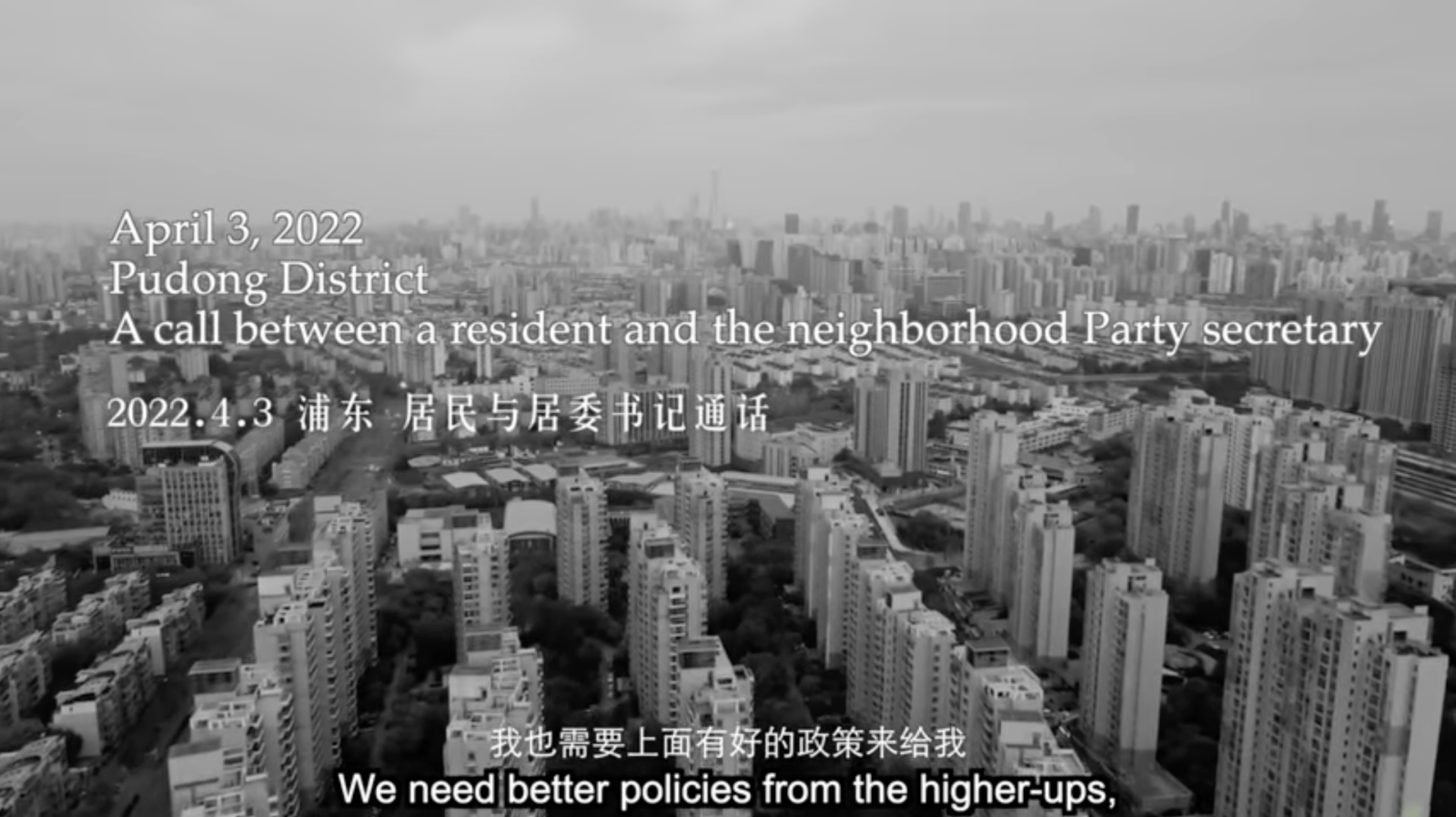
Screenshot of Voice of April, English subtitles are added by China Digital Times.
Shanghai, China’s economically most important city, was brought to a sudden standstill in March 2022 under a lockdown that lasted two months. A viral video called “Voices of April” shows the tears and desperation of some of its 20 million residents. Babies forcibly separated from their parents; hospitals turning severely ill elders away; mothers prevented from going outside to get fever medicine for their sick children; and a community party secretary who breaks down when residents plead with her for help and tells them that ‘the hierarchy’ doesn’t have any good policies, work stress has brought her to the brink, and she doesn’t dare show her face to the neighbors she is supposed to be serving … (the video was rapidly taken down within China). That month, Baidu search term rankings in Shanghai for ‘psychotherapy’ spiked; by December, the search term had risen 250% in popularity year-on-year.
When a community in the northern city of Hohhot was locked down in November 2022 after two residents tested positive for coronavirus, one mother became suicidal, and her daughter called the emergency hotline. Her pleas were rejected – “no urgent medical symptoms” – and help did not arrive. The mother jumped to her death from the 12th floor, but the daughter remained confined to the building - community management had ‘locked down’ its entrance with corrugated iron. Neighbors shared the video online of the daughter’s desperate screams, eliciting a chorus of anger. Research published 2021 in the British Medical Journal showed a 37% drop in Chinese traffic accident fatalities under lockdowns at the start of the pandemic, but deaths from suicide and falls rose by 66% and 43%.
China’s stringent pandemic-era social controls lasted the longest anywhere in the world. In May 2022, the WHO branded China’s zero-covid policy as unsustainable, warning that “any measure to tackle a coronavirus outbreak should show respect for human rights.” Still, authorities stayed publicly committed to the policy until November. Long-lasting and inhumane controls have made the collective trauma more extensive, and the numerous severe implications have included the following:
a) Stressed medical personnel and doctor-patient conflicts
When coronavirus first broke out in Wuhan at the end of 2019, officials tried to cover up the story. Several frontline medical personnel blew the whistle warning their colleagues of what was happening, which led to extreme stress: a police summons, a dressing-down from their leaders, and even being smeared as rumor-mongers by central government-run media. The most famous among them, Dr. Li Wenliang, died of coronavirus in February 2020, sending shockwaves across the Chinese internet. In the face of anger at home and abroad, Dr. Zhong Nanshan, leader of the National Health Commission's COVID-19 experts group, told Reuters that Dr. Li had died a “hero of China” and added that “(b)ehind him stood hundreds of other doctors all wanting to tell the truth and now being encouraged by the government to do so.”
However, for the next two years, instead of following doctors' suggestions, China followed a zero-covid policy with numerous irrational measures that drove medical personnel to exhaustion. For example, large-scale ‘normalized PCR testing’ with 11.5 billion tests (official figures) was carried out up to April 2022 (figures stopped being released afterward). Countless doctors and nurses were redeployed to residential communities or other cities to take PCR swabs all day, leaving them unable to perform their regular duties. Oncologists, anesthetists, and all manner of medical personnel were redeployed to these simple tasks. Guangzhou seconded 45,000 medical personnel in this way in October 2022, with 51.14 million test samples taken.
In December 2022, Caijing magazine reported on the deputy head of a prominent hospital in Northern China, who was regularly made to spend all day outdoors giving people PCR swabs in temperatures below minus 10 degrees Celsius; due to their frequent contact with strangers, their family members had to move away from the family home, and the doctor went back into hospital the next day to perform operations.
In already under-resourced township and village clinics, PCR tests became the staff’s main task for three years. YiMagazine reported that some clinics in Hubei province with only a few dozen staff saw two-thirds of them seconded for administering PCR tests, leaving the clinic unable to operate or admit patients.
The absurdity was evident: large amounts of medical resources went to waste, patients could not access the necessary care, and some even died after being denied treatment for lockdown reasons. There was no accountability when it came to the pandemic controls. Many doctors were attacked by angry patients while also dealing with the relentless stress of round-the-clock work and unpredictable schedules.
A 2020 study of trainee doctors in Shanghai “found that physicians in China experienced an increase in mental health symptoms and fear of violence and a decline in mood after the COVID-19 outbreak.” A random survey of 50,000 urban residents in 2022 found pandemic-era incidences of post-traumatic stress disorder (PTSD) of 26.9% among medical personnel, 23.8% for coronavirus patients, and 19.3% for ordinary residents.
b) Soaring suicide rates among school pupils
According to the 2022 World Mental Health Report, “(e)xtended school and university closures interrupted routines and social connections, meaning that young people missed out on learning and experiences expected for healthy development. Disruption and isolation can fuel anxiety, uncertainty, and loneliness, leading to affective and behavioral problems.”
Academic pressure is already heavy in China and frequently triggers psychological problems among primary and secondary students. Starting at the end of 2012, the China Children’s and Adolescents’ Mental Disorder Epidemiological Survey tracked a sample of 74,000 pupils from ages 6-16 in five provinces/municipalities. Reporting in May 2021, it found an average disorder incidence of 17.5% among children and adolescents. But its coordinator Dr. Zheng Yi saw this as an underestimate since the cohort surveyed were all “pupils at school,” which effectively excluded significant school dropouts and underage children. There is only one psychological counselor for every 4000 Chinese school pupils, and the quality of their services is also far from guaranteed.
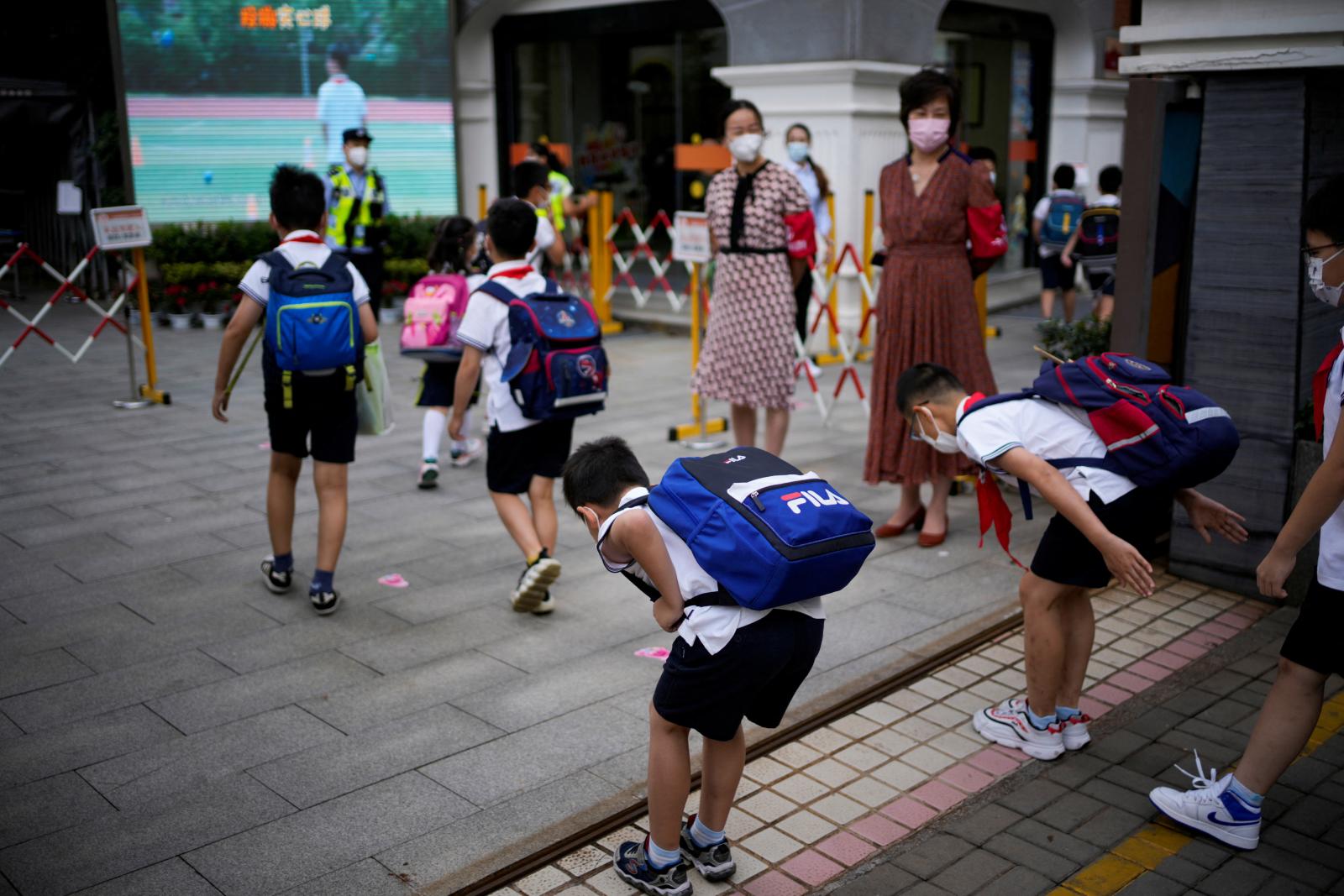
Students bow as they enter a school, as schools reopen following months of closure since the coronavirus disease (COVID-19) outbreak in Shanghai, China, September 1, 2022. (Aly Song/ REUTERS /TPG images)
During the pandemic, protracted lockdowns and isolation measures led to widespread attention deficits, aggressive behavior, and interpersonal difficulties becoming common among primary school pupils. Their older counterparts frequently displayed anxiety, depression, and internet addiction, with a 30% increase in the number of adolescents among those diagnosed with mental disorders by Peking University Sixth Hospital in the first two years of covid-19. There were ‘worrying’ results in a survey of 300,000 school pupils in November 2021 by Tsinghua University: many of them (i) lacked motivation for studies, (ii) were immersed in cyber worlds and uninterested in the real one, (iii) lacked social skills, or (iv) were unable to appreciate the value of life. Professor Peng Kaiping, leading the survey, reflects on the pandemic at the end of 2022: “The next generation is being impacted even more than we think; three years of their adolescence will have been spent during the pandemic, which is an unprecedented tragedy in human history. Anxiety, depression, emotional dysfunction, and suicides are all rising.”
After lockdowns were lifted, pupils returned but had to reacclimatize to their schools’ rules of behavior, which led to protracted teacher-pupil conflicts. The first school term after the end of zero-covid started in February 2023. Reports of pupil suicides around the country soon followed. Online reports of seven school suicides in a week in Tianjin in March, and the education bureau arranged urgent meetings between schools and parents, have not been confirmed or denied officially; nonetheless, it became a major topic nationwide and sparked terror among parents. Education expert Prof. Yang Dongping says that there was a spike in school-age suicides during the pandemic, reaching several times pre-pandemic levels, to the extent that some local education departments immediately suspended school exams after the return to physical classrooms.
c) University students have lost hope about the future
Based on a sample of 200,000 people, the Report on National Mental Health Development in China (2021-2022) finds a higher depression risk among youth than adults, with a particularly high risk for university students, especially undergraduates.
In a June-July 2020 survey of over 11,000 university students at 30 institutions in Wuhan at the start of the pandemic, a prevalence of 41.5% was found for depressive symptoms, 32.6% for anxiety symptoms, 35.0% for insomnia symptoms, 8.5% for PTSD symptoms, and 2.0% for suicidal behavior.
The “pandemic student generation” refers to the 28 million students who were undergraduates at Chinese universities or on joint vocational and undergraduate courses in the three years from 2019-22; when other higher education students potentially affected by the pandemic are added, the number goes up to 60 million. From 2020 onwards, these students constantly fear their university making a sudden ‘blanket decision’: PCR testing at prescribed times and designated times for using the canteen, toilets, and showers. Some students complained they hadn’t been allowed to wash for 50 days.
Student anger came to a head at Tongji University in Shanghai in April 2022, sparked by time restrictions for using the toilet and poor-quality canteen food. A student raised these complaints in a videoconference with the university. When they weren’t listened to, they used ‘share screen’ to show a PowerPoint presentation insulting the university leaders who had ignored them, to their fellow students’ great amusement.

Memes created by Chinese Internet users to parody the PPT incident at Tongji University and to express dissent against zero-covid policies. Pictures are collected by China Digital Times.

